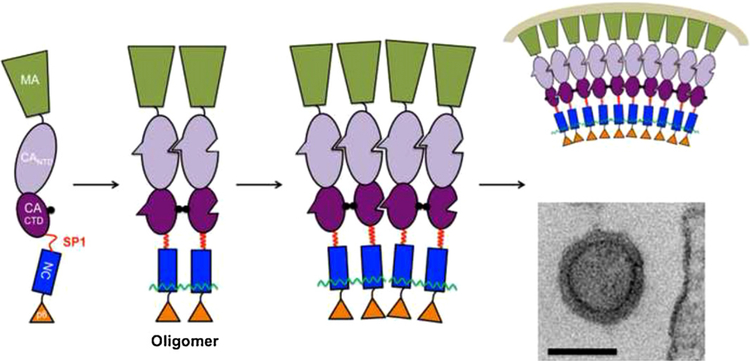Fig. 1.
Suggested model for oligomerization-driven assembly. Binding of free Gag molecules to RNA promotes oligomerization, increasing local Gag concentration. In our model, the SP1 linker assumes a helical conformation at a sufficiently high Gag concentration; this in turn triggers a conformational change leading to the appearance of new interfaces for assembly. The figure shows, from left to right, a Gag molecule free in solution; an oligomer of Gag bound to a short RNA molecule (wavy line); a hypothetical assembly intermediate consisting of two such oligomers joined together solely via Gag–Gag interaction; and (top) a schematic of a portion of an immature virus-like particle, and (bottom) a typical transmission electron micrograph of an authentic immature virus-like particle. Bar = 100 nm.

